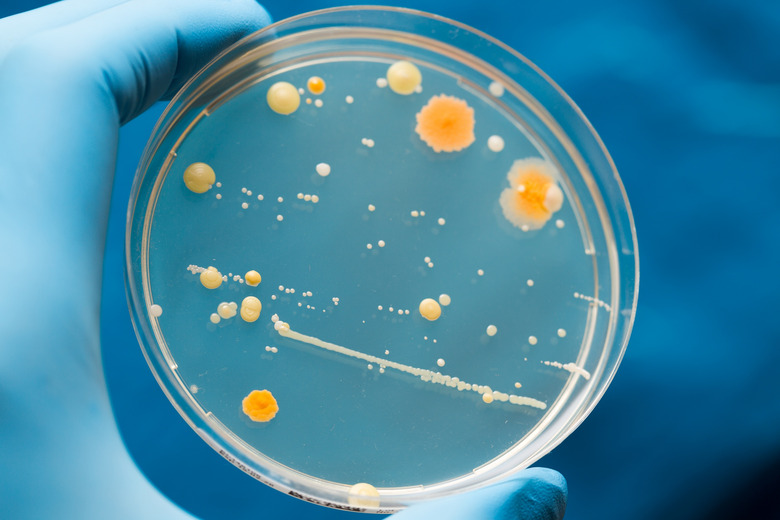Nutritional Types Of Bacteria
Bacteria, like all living cells, require energy and nutrients to build proteins and structural membranes and drive biochemical processes. Bacteria require sources of carbon, nitrogen, phosphorous, iron and a large number of other molecules. Carbon, nitrogen and water are used in the highest quantities. The nutritional requirements for bacteria can be grouped according to the carbon source and the energy source. Some types of bacteria must consume pre-formed organic molecules to obtain energy, while other bacteria can generate their own energy from inorganic sources.
Autotrophs and Heterotrophs
Autotrophs and Heterotrophs
Some bacteria obtain energy by consuming organicmolecules. These organisms are heterotrophs, like animals and fungi that eat other organisms. Other types of bacteria make their own food by converting light energy, chemical energy or inorganic substances into usable energy that these single-celled organisms need to live. These do-it-yourself bacteria are autotrophs, like plants and algae.
Bacteria That Eat Inorganic Compounds
Bacteria That Eat Inorganic Compounds
Some autotrophic bacteria, called chemotrophs, obtain their nutrition from inorganic compounds. Carbon dioxide is typically the sole source of cellular carbon. These autotrophs use hydrogen sulfide, ammonia or hydrogen gas to reduce carbon into necessary sugars. Nitrifying bacteria, which oxidize ammonia to create nitrites and nitrates, are an example of bacteria which use autotrophic nutrition, or more specifically, chemoautotrophic nutrition.
Bacteria That Consume Organic Compounds
Bacteria That Consume Organic Compounds
Heterotrophic bacteria require organic sources of carbon such as sugars, fats and amino acids. Saprophytic bacteria are an example. They attain their nutrition from dead organic matter. Using enzymes, these bacteria will break down complex compounds and use the nutrients to release energy. Saprophytic bacteria are decomposers and play an important role in ecosystem by releasing simpler products which plants and animals can use.
Bacteria That Use Light as Food
Bacteria That Use Light as Food
Phototrophic bacteria are autotrophs that absorb light energy, then utilize this in photosynthesis to create cellular energy. There are two types of phototrophs. Those which do not produce oxygen as a byproduct are termed anaerobic phototrophs, while those which do produce oxygen are termed aerobic phototrophs. Cyanobacteria are an example of bacteria which execute photoautotrophic nutrition. Both autotrophs and heterotrophs can be phototrophs. Heterotrophic phototrophs consume organic carbon in addition to producing organic molecules via photosynthesis.
Bacteria That Eat Chemicals
Bacteria That Eat Chemicals
These bacteria obtain chemical energy from their surroundings and convert it into adenosine triphosphate (ATP) for cellular use. These bacteria are also considered chemotrophs and obtain energy from oxidation-reduction reactions of inorganic compounds such ammonia, hydrogen sulfide and iron. For instance, sulfur bacteria are chemoautotrophs which produce energy by oxidizing hydrogen sulfide into sulfur and water. This process is a form of chemosynthesis.
Cite This Article
MLA
Altidor, Martine. "Nutritional Types Of Bacteria" sciencing.com, https://www.sciencing.com/nutritional-types-bacteria-2515/. 4 June 2018.
APA
Altidor, Martine. (2018, June 4). Nutritional Types Of Bacteria. sciencing.com. Retrieved from https://www.sciencing.com/nutritional-types-bacteria-2515/
Chicago
Altidor, Martine. Nutritional Types Of Bacteria last modified August 30, 2022. https://www.sciencing.com/nutritional-types-bacteria-2515/
